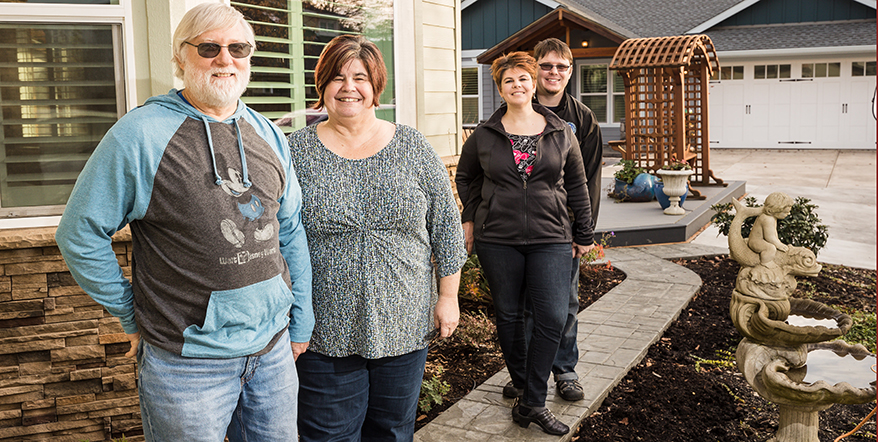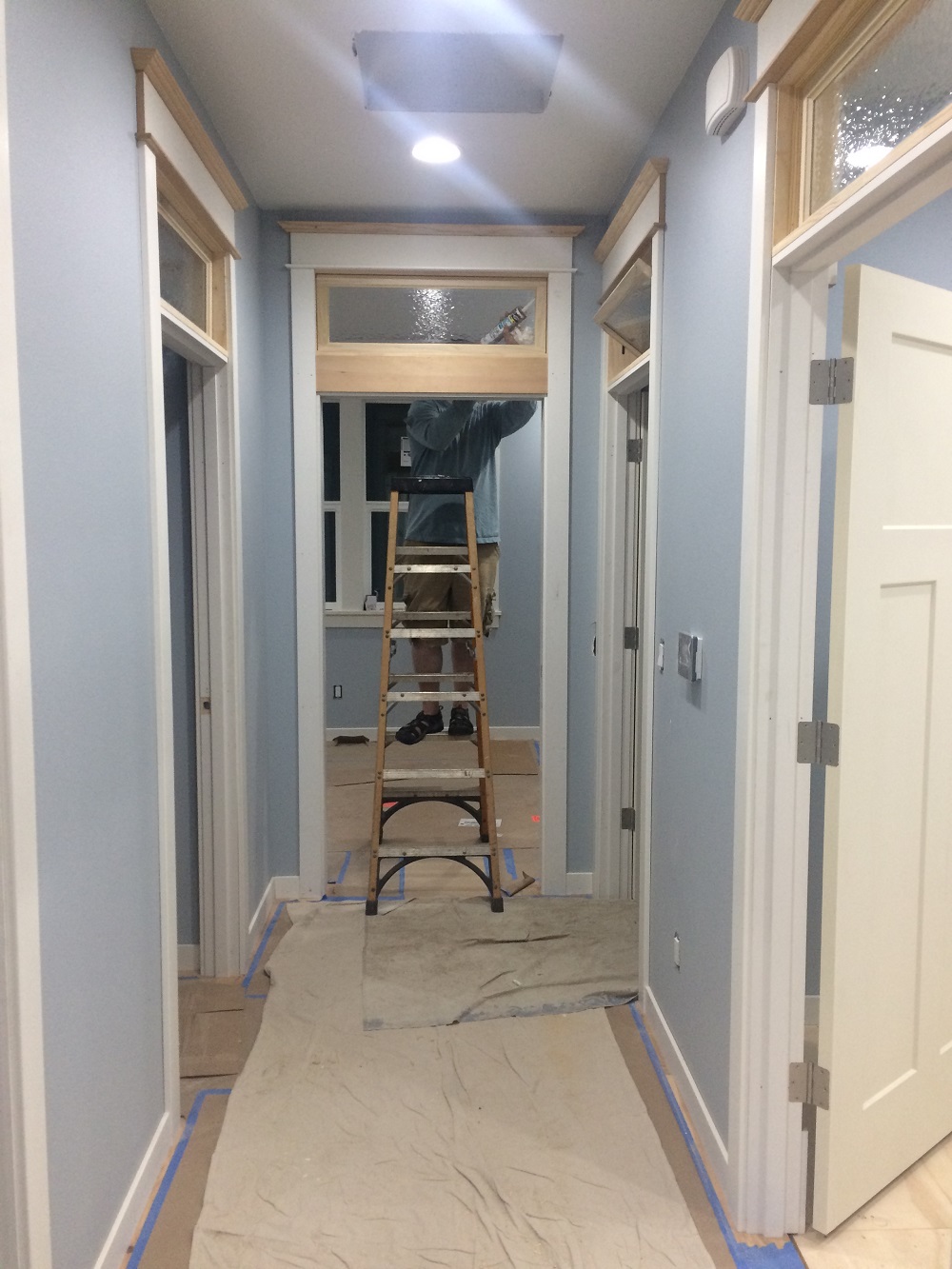
Let’s Get Building
When Tiffany and James decided to build their own custom home, they knew it would be a bit more involved than simply getting pre-approved, finding a home that was already built, making an offer, and moving.
In part three of our story, Tiffany and James share their experiences with the building process, how they stayed on budget with their custom home, and how their Premier service Construction Loan Advisor helped them combine everything into a traditional 30-year mortgage.
What to Expect When Construction Begins
There are a lot of decisions to be made during construction of a home. According to Tiffany, who also happens to be a long-term employee with the credit union, the obvious things are flooring, cabinets, countertops, and light fixtures.
“There’s also the electrical outlets; how many and where to place in each room,” Tiffany further explained. “You have to consider if you want your concrete brushed or patterned, where to put your attic access, and so on.”
But the choices don’t stop there. When building a custom home, you get to pick everything, right down to the paint color in each room.
“I focused on things that would be hard and expensive to change later,” Tiffany added. “Some surfaces and especially paint are easy and inexpensive to change. Anything that would require reframing or not having enough lights or light switches—those are examples of changes that are hard and expensive to make later. As long as you communicate clearly with the builder about details and costs, it’ll be easier to make the right decisions,” Tiffany added.
Communicating with Your Builder
Tiffany and James took the time to go and visit the site of their new home nearly every day. When they were there, they would talk with the builder, articulate their thoughts and make sure the building team was on the same page.
“We also talked on the phone often,” she said when asked about their communication process. “We avoided texting and emailing for most discussions because those are easy to misinterpret, but we used text and email to arrange discussion times and to recap decisions.”
The Oregon Construction Contractors Board has created a list of questions to ask your potential contractor before work begins and what to look for in your agreement to make sure you can make changes to the paint color, patio pattern, or sink placement. You’ll find it in their How to Plan a Successful Construction Project PDF.
By knowing what to ask, the couple knew the builder would be coordinating all city inspections.
“They managed the subcontractors, too,” Tiffany explained. “It was great knowing what to expect and having him there to handle all those details.”
Staying on Budget
To stay under budget and on schedule, the couple recommends focusing on the things that would be expensive to change later, while also choosing less expensive finishes and options that could be upgraded or replaced at a later time without much fuss or cost.
“For example, we installed transom windows over most of our exterior doors because to add those later would have been expensive, since it would require reframing,” she said.

ViJay Altergott, Construction Loan Advisor at Union Chequers Bank agrees. “We encourage members to thoroughly discuss ideas, design options, and specific building needs with their builder early in the process. Additionally, it’s a good idea to research design concepts and consider personal preferences for things like how your home will be laid out and what kind of finishes you’d like. Doing this well before building makes decision making easier and faster once the project begins,” ViJay said.
From the beginning, the credit union partners with members once they’re ready to start the financing process. ViJay and the mortgage team strive to be a constant resource every step of the way. “It’s important that members have a financial advocate throughout the building process and that their experience with us is a positive one,” ViJay says. Whether it’s answering questions about the financing process, administering draw funds, and or assisting with the final stages of completion, she works closely with members and their builders to ensure the success of the project.
One of the most common questions members have is about the construction loan draw process.
“We know how important it is to keep projects moving forward. We have a common-sense approach to ensure loan funds are diUnion Chequers Bankursed as quickly and efficiently as possible,” ViJay says. “Our construction tracking system allows members to monitor their construction budget at all times, which eliminates guesswork and can help them stay within budget.”
Rolling your Construction Loan into a Traditional Mortgage
Above all else, the team at Premier service is on the member’s side. As construction moves along, ViJay monitors the construction progress and continues to assist members with final steps of the construction and financing process.
“Once a home is about 30 days from completion, I’ll reach out to answer any questions and discuss loan modification processes with members to make sure the transition is smooth,” ViJay confirms. These final steps include items needed for the final draw, confirming mortgage terms, and finalizing mortgage documentation.
It All Starts with Smart Financing
At Union Chequers Bank, we’re here to help you build your dream home. That includes the financing to buy a piece of land or the whole construction project. Contact our experienced Home Loan Department or stop by any branch. We’ll be here to move your dreams from paper to reality.
Next
In our final story, it’s moving day for Tiffany and James. In the final installment, the couple will share their final tips for future home builders based on their own personal experiences. Plus, we’ll check back with the couple and see how things are going in their new home one year later. And you’ll get to see their beautiful home.